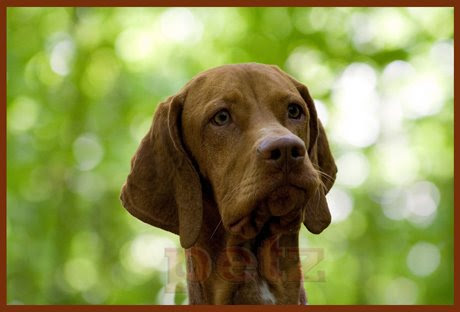

Country of Origin:Hungary.
Group:Gundog.
Size:Large.
Lifespan:12-14 years.
Exercise:High.
Grooming:Very low.
Trainability:Moderate.
Watchdog ability:High.
Protection ability:Low.
Date of Origin:14th Century.
Other Names:Vizsla, Magyar Vizsla, Hungarian Pointer, Hungarian Vizsla.
Original Function:Pointing, falconry, trailing.
Group:Gundog.
Size:Large.
Lifespan:12-14 years.
Exercise:High.
Grooming:Very low.
Trainability:Moderate.
Watchdog ability:High.
Protection ability:Low.
Date of Origin:14th Century.
Other Names:Vizsla, Magyar Vizsla, Hungarian Pointer, Hungarian Vizsla.
Original Function:Pointing, falconry, trailing.
HISTORY.
The Vizsla was developed in Hungary. The Vizsla is a Hungarian hunting dog which probably descended from two ancient breeds: the Transylvanian hound, and the Turkish Yellow Dog (now extinct). In more recent times, the blood of the German Shorthaired Pointer and the Pointer has been added to the Vizsla. Written descriptions and drawings that depict dogs similar in type to the Vizsla can be found in documents dating as far back as the 14th Century. Dogs of this type became extremely useful as hunting dogs and by the end of the 19th Century they were successfully competing in organized competitions for pointing dogs in Hungary.
After World War II, the breed was nearly extinct. Hungarians saved some dogs and built the breed up again. After World War II, when Russians took control of Hungary, the native Hungarians feared all the Vizsla would be killed by the Russians, because owning a Vizsla was a symbol of aristocracy. Some devotees smuggled Vizslas out into Austria and to other countries, including America. The name "Vizsla" in Hungarian means, "Pointer". The Vizsla is a fine retriever with an excellent nose, and is a good small game and bird hunter and pointer – even on marshy terrain. They have also been successful obedience competitors. The breed's gentle, friendly disposition makes them well-suited to their role as a family companion dog. The Vizsla was recognized by the United Kennel Club in 1984.
SIZE.
The ideal shoulder height for dogs is 58 - 64 cm for bitches 54 - 60 cm
GENERAL APPEARANCE.
The Vizsla is a medium-sized, short-coated hunting dog, with a distinguished appearance and bearing, and a docked tail. They are rather lightly built, but robust. The coat is an attractive golden rust. This is a dog of power and drive in the field, yet is a tractable and affectionate companion in the home. Field-conditioned coats, as well as a brawny or sinewy muscular condition, and honorable scars, indicating a working hunting dog, are never to be penalized. The qualities that make a “dual dog” are always to be appreciated, not depreciated.
TEMPERAMENT.
The Vizsla is a friendly and loving dog breed that adapts well to family life. Alert and responsive, the Vizsla makes a good watchdog. The owner of a Vizsla should be an active and energetic leader because if not given enough exercise, the Vizsla may become destructive.
COLOURS.
Various shades of russet gold and dark sandy gold. The leathers may be a little darker, otherwise uniform in colour. Red, brownish or lightened colour is undesirable. A little white patch on the chest or at the throat, not more than 5 cm in diameter, as well as white markings on the toes are not considered faulty. The colour of the lips and the eyerims corresponds to the colour of the nose.






